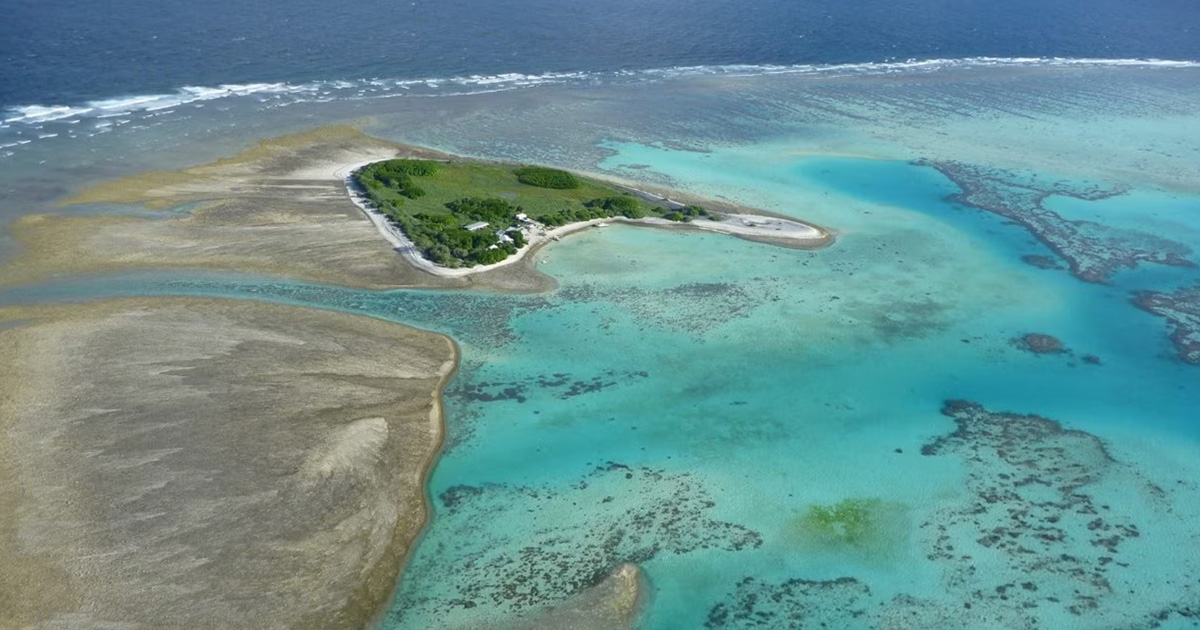University of Sydney researchers have found 25 percent of Australia's coral islands, land masses formed by reefs, currently face high to very high risk of being wiped out by climate change.
The findings, published in the latest edition of the journal Science of the Total Environment, identified that all of the 56 investigated Australian coral islands are exposed to some degree of climate risk but that three small, unvegetated coral islands in Western Australia, on Scott, Clerke and Imperieuse reefs, are the most vulnerable.
Lead researcher Dr. Tommy Fellowes from the School of Geosciences said: “The fate of low-lying coral reef islands and their associated reef ecosystems hangs in the balance, threatened by the compounding effects of climate change—rising sea levels, warming oceans, intensifying storms and acidification.”
“We quantified the risks to Australia’s coral islands for the first time and our findings make clear the urgent need to address these threats and the vulnerable state of these islands.
“Islands in the very high-risk category, particularly those on the north-west shelf of Western Australia, are most at risk. This is due to their small size, low elevation, angular shape, lack of vegetation, exposure to lower ocean pH, higher sea-level rise, isolation, and frequent tropical storms and heatwaves.”
The team’s findings not only unravel the complexities of environmental conditions impacting coral reef islands but put front of mind the link between the stability of these islands and the legal maritime jurisdictions they support. Losing the islands could potentially impact Australia’s area of control.
“Coral islands support and extend coastal countries’ legal maritime jurisdictions across vast sea areas,” Dr. Fellowes said.
“These maritime territories grant sovereign rights over critical resources, including fisheries and mineral exploration, making the stability and resilience of coral islands a matter of strategic importance for Australia’s and the region’s coastal management.
“In Australia, they play a pivotal role supporting approximately 15 percent, or 1.2 million km2, of our maritime zone across the Indian and Pacific oceans and to the north in the Torres Strait.”
The research introduces an innovative method to evaluate and categorize coral reef islands based on their risk from and resilience to climate change.
The risk system, built using open-access ocean climate data and satellite imagery that could be applied globally, provides decision-makers with a tool to prioritize protection efforts for vulnerable coral islands in the era of rapid climate change.
“Using a risk matrix, we’ve classified these islands into five categories, ranging from very low to very high risk,” Dr. Fellowes said.
“Our findings will not only inform and guide decision-makers in implementing adaptive measures but will also contribute to the broader global understanding of the challenges faced by these vital ecosystems.
“Coral islands are home to an estimated 65 million people worldwide and hold crucial environmental, economic, social, and geopolitical significance, especially for our Pacific neighbors on Small Island Developing States (SIDS).”
Dr. Fellowes said while rising sea level poses a significant threat, the overall survival of coral islands is dependent on multiple climate threats and is also linked to declining reef health caused by marine heatwaves and coral bleaching.
This is because the living reef supplies sediment that keeps the islands above sea level. These factors collectively amplify the challenges faced by coral islands and SIDS communities.



